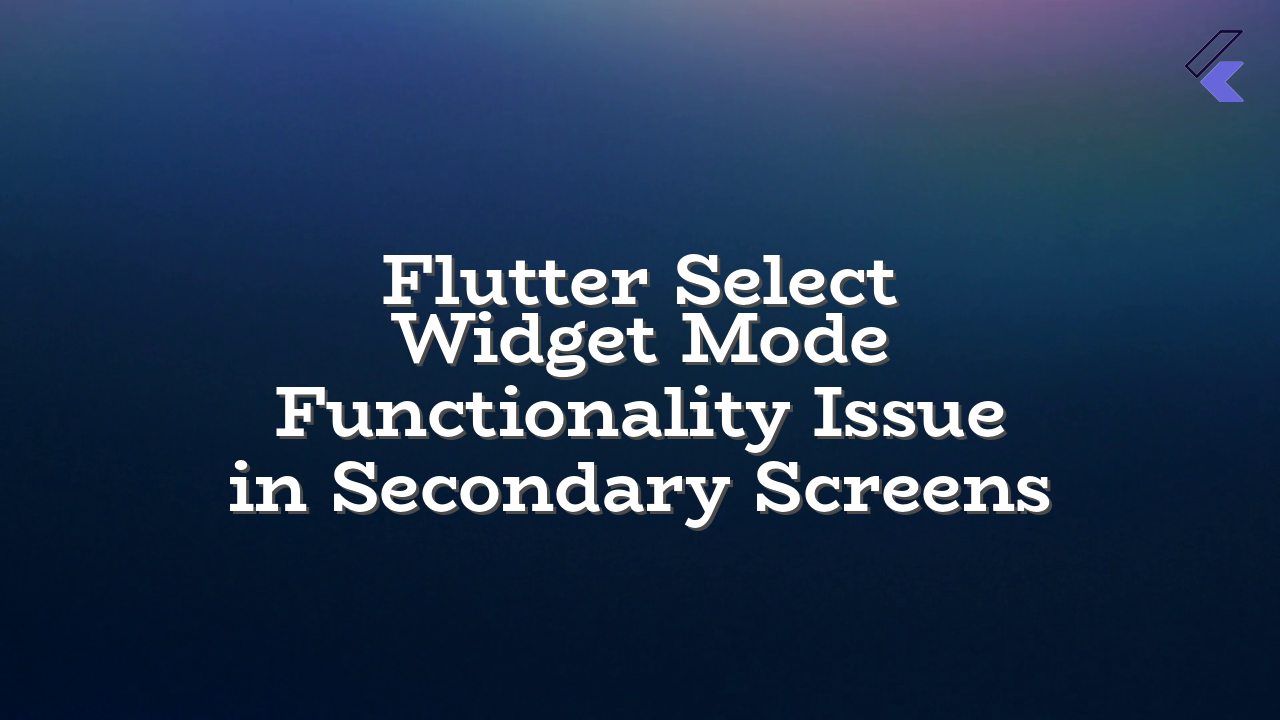This article addresses an issue where Flutter’s select widget mode functionality is broken in secondary screens, causing the app to refresh and preventing access to the desired pages.
Problem Description
Users report that updating to Flutter version 3.29 has caused the “select widget mode” to behave inconsistently, specifically on secondary screens. Selecting a widget now immediately refreshes the entire app, taking the user back to the home screen and preventing navigation to other screens. This functionality worked correctly in older versions.
Possible Causes
- Widget Lifecycle Changes: The update might have altered how widget states or lifecycle methods work, impacting the select widget mode behavior, especially in navigating to secondary screens.
- State Management Conflicts: A conflict with the state management (e.g., Provider, Riverpod) could be causing the app to refresh unexpectedly.
- Navigation Issue: An error in how the app handles navigation between screens could lead to the described behavior, where the select mode interacts with the navigation stack incorrectly.
- Context Issues: Improper context handling within the widget selection process might prevent proper access to or update of the selected widget within the secondary screen.
Troubleshooting Steps
- Check for State Management Issues: Carefully inspect your state management code (if applicable) for any potential conflicts with the select widget mode logic. Ensure proper data sharing or updates between screens are correctly handled.
- Verify Navigation Stack: Inspect how your app handles navigation. Ensure the select widget mode interaction doesn’t lead to unintended navigation stack manipulation or resets.
- Rebuild State on Secondary Screen: Instead of forcing a complete refresh of the entire app, try rebuilding *only* the relevant widgets on the secondary screen when entering select mode. This can isolate the problem and reduce unnecessary re-renders.
- Isolate Widget Selection Logic: Try creating a separate widget or function that handles the widget selection process. Ensure it’s called and executed only when necessary, and the interactions happen properly with the context of the secondary screen.
- Check for Any Errors During Debugging: Use Flutter’s debugging tools (like DevTools) to check for any unhandled exceptions that might be thrown during the widget selection process, especially on the secondary screen. Pay close attention to the error messages and stack traces.
- Implement a Debugging Logging System: Add logs in the relevant parts of your code to observe the states and events when you select a widget in a secondary screen. This is crucial for pinpointing issues and understanding the sequence of events that lead to the refresh.
Example: Potential Issue and Fix
Let’s say you’re using a Navigator for navigation:
import 'package:flutter/material.dart';
// ... other imports
class MyHomePage extends StatefulWidget {
// ...
@override
_MyHomePageState createState() => _MyHomePageState();
}
class _MyHomePageState extends State<MyHomePage> {
// ... existing state
void selectWidget(Widget widget) {
// Instead of Navigator.pushReplacement...
// try a context-specific update
setState(() {
selectedWidget = widget;
});
print('Widget Selected: $selectedWidget'); //Log
}
Widget build(BuildContext context) {
// ...
// Implement your widget selection logic
}
}
The example highlights how directly using setState instead of a Navigator method that completely reloads the screen could prevent the unexpected app refresh. Always ensure that context for a secondary screen is valid when modifying the UI state in that screen.
Error Handling Suggestions
If you encounter errors like NoSuchMethodError or NullPointerException, it often indicates an issue with accessing components or data on the secondary screen that is now invalid. Carefully inspect where you’re using the widget in the secondary screen and ensure that it’s still valid or accessible during the state change.
By following these steps, you should be able to identify and resolve the issue with the Flutter select widget mode in secondary screens and navigate to other screens successfully.

